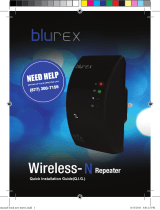
© Copyright 2013 TRENDnet. All Rights Reserved.
TRENDnet User’s Guide
Table of contents
2
Table of Contents
Product Overview ........................................................................... 4
Package Contents .......................................................................................................... 4
Features ......................................................................................................................... 4
Product Hardware Features........................................................................................... 5
Application Diagram ...................................................................................................... 6
Basic Router Setup .......................................................................... 7
Creating a Home Network ............................................................................................. 7
Router Installation ......................................................................................................... 8
Connect additional wired devices to your network ..................................................... 14
Wireless Networking and Security ................................................. 15
How to choose the type of security for your wireless network .................................. 15
Secure your wireless network ..................................................................................... 16
Connect wireless devices to your router ..................................................................... 18
Connect wireless devices using WPS ........................................................................... 18
Basic wireless settings ................................................................................................. 20
Guest Network ............................................................................................................. 21
Steps to improve wireless connectivity ....................................................................... 23
Advanced wireless settings .......................................................................................... 24
Multiple SSID...................................................................................................... 24
Wireless bridging using WDS (Wireless Distribution System) ........................... 25
Additional wireless settings ............................................................................... 27
Access Control Filters .................................................................... 28
Access control basics ................................................................................................... 28
MAC Address Filters ........................................................................................... 28
Doman/URL Filters ............................................................................................. 30
Protocol/IP Filters (LAN Client Filters) ............................................................... 30
Advanced Router Setup ................................................................ 31
Access your router management page ........................................................................ 31
Change your router login password ............................................................................ 31
Change your device name ........................................................................................... 32
Change your device URL .............................................................................................. 32
Manually configure your Internet connection ............................................................ 32
IPv6 Internet Connection Settings ............................................................................... 33
Clone a MAC address ................................................................................................... 34
Change your router IP address .................................................................................... 34
Set up the DHCP server on your router ....................................................................... 35
Set up DHCP reservation ............................................................................................. 35
Enable/disable UPnP on your router ........................................................................... 36
Enable/disable Application Layer Gateways (ALG) ...................................................... 36
Identify your network on the Internet ........................................................................ 37
Set your router date and time ..................................................................................... 38
Create schedules ......................................................................................................... 38
Open a device on your network to the Internet .......................................................... 39
DMZ ................................................................................................................... 39
Virtual Server ..................................................................................................... 39
Special Applications ........................................................................................... 40
Gaming............................................................................................................... 41
Allow remote access to your router management page ............................................. 41
Prioritize traffic using QoS (Quality of Service) ........................................................... 42
Add static routes to your router .................................................................................. 43
Using External USB Storage ........................................................... 44
Samba Network File Server ......................................................................................... 44
FTP (File Transfer Protocol) Server .............................................................................. 45
Print Share Utility Installation ....................................................... 46




















